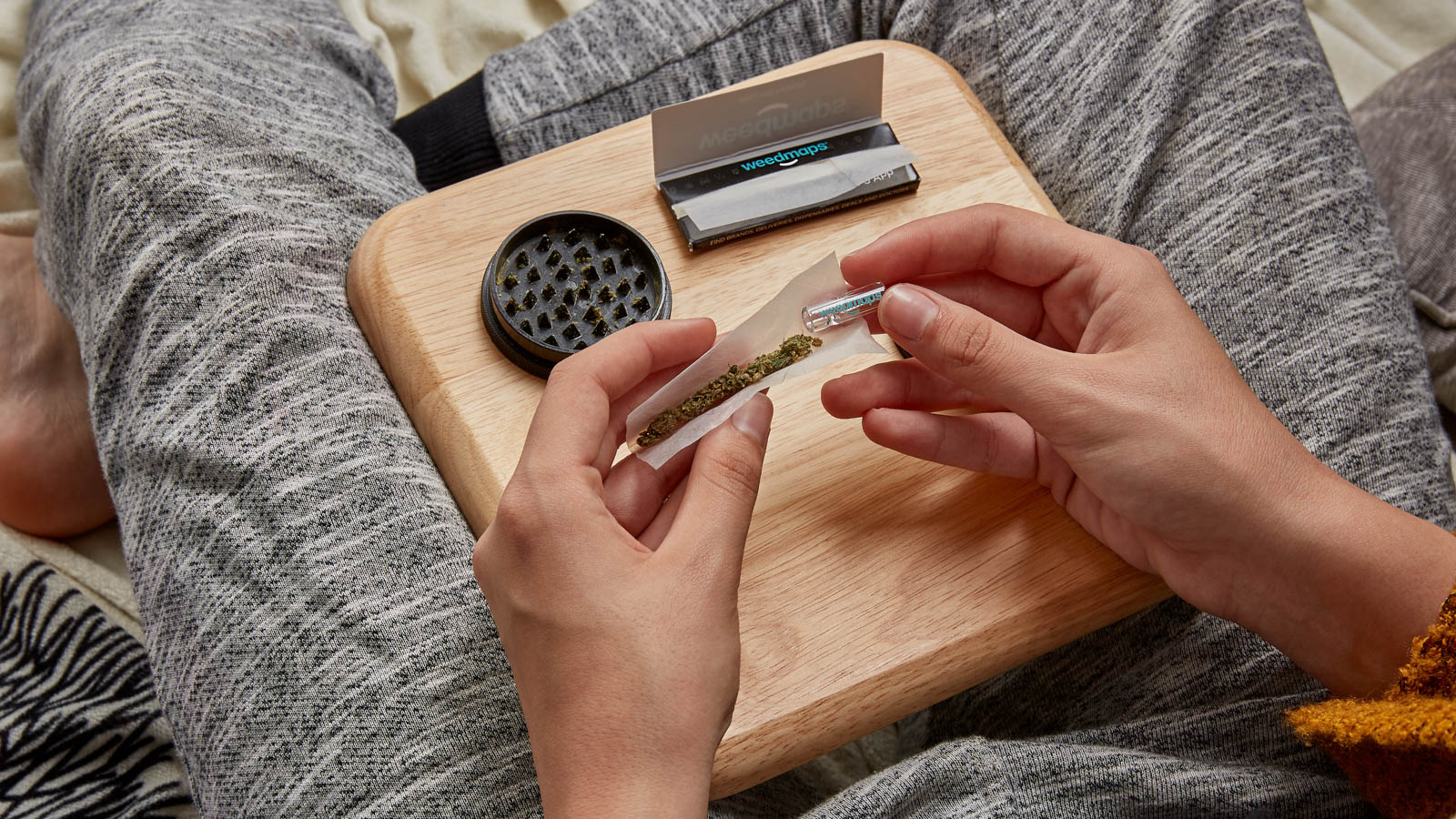Joints and spliffs are some of the most common methods of smoking cannabis flower. However, it's important to know that while they may look similar, there is one key ingredient that completely changes the experience they offer: tobacco.
Find pre-rolled joints near you
 Photo by: Gina Coleman/Weedmaps
Photo by: Gina Coleman/WeedmapsImage lightbox

What's a joint?
A joint contains dried cannabis flower rolled with smokeable rolling paper and, usually, a filter. Other cannabis products such as kief or concentrates can be included, but a joint typically just contains ground flower. Joints are popular because they're easy to transport and smoke, and their hand-rolled nature allows for customization to fit the mood or task at hand.
What's a spliff?
A spliff is nearly the same thing as a joint, but with the addition of tobacco. Including tobacco provides a nicotine buzz that some enjoy, and it can help stretch a dwindling supply of flower. The word "spliff" is believed to be from West Indian origins and popularized in Jamaican-English slang. However, the exact roots of the word aren't clear and its usage in Jamaican slang doesn't directly refer to a spliff as we know it, but rather a large or potent cannabis-only joint. The ratio of a spliff varies depending on preference but is usually about half cannabis and half tobacco.
 Photo by: Photo by: Gina Coleman/Weedmaps
Photo by: Photo by: Gina Coleman/WeedmapsImage lightbox

What's a blunt?
Blunts are worth mentioning as they're a close relative to a spliff. A blunt is rolled by emptying a pre-rolled cigar or cigarillo — which is typically made with a tobacco leaf — and filling it with cannabis. Alternatively, you can use blunt papers.
Pros and cons of a joint
There are several pros to including joints in your consumption rotation. First, they are relatively quick and easy to roll and can be readily transported in cigarette cartons or other small carrying cases. Since they can be lit and put out repeatedly, joints are a convenient way to have a few puffs now and more later. There's also the quintessentially social cannabis experience of passing a joint among friends. While there aren't many cons, one is that they can burn quickly or unevenly if rolled too tightly or loosely.
Pros and cons of a spliff
The pros of a spliff mirror the pros of a joint with the main difference being the effects of the nicotine. The mixture of THC and nicotine may provide a different experience than that of a joint rolled with cannabis only, but it depends on the smoker. Like spliffs, blunts offer the effects of nicotine as well, but these effects tend to be more pronounced with blunts because of the cigar tobacco. Spliffs may also be a bit more discreet than joints because the tobacco may mask some of the weed smell. However, a notable con is that tobacco is potentially addictive and carcinogenic.
Bottom line
Both joints and spliffs have their strengths and weaknesses. While cannabis smoke has been characterized as less harmful than tobacco smoke, smoking both cannabis and tobacco may cause irritation and damage to the lungs. Other than tobacco, the real difference between joints and spliffs may just come down to which experience you prefer.



